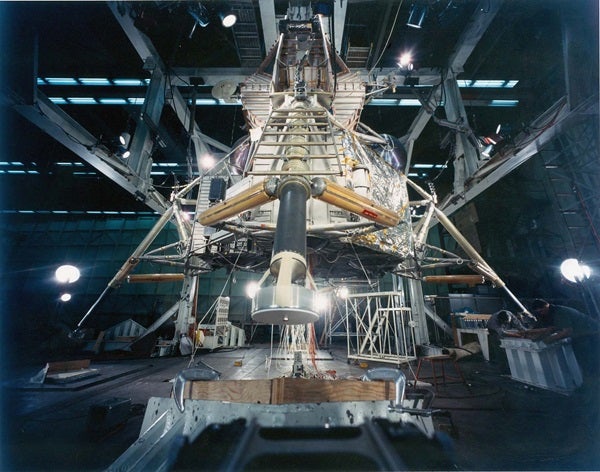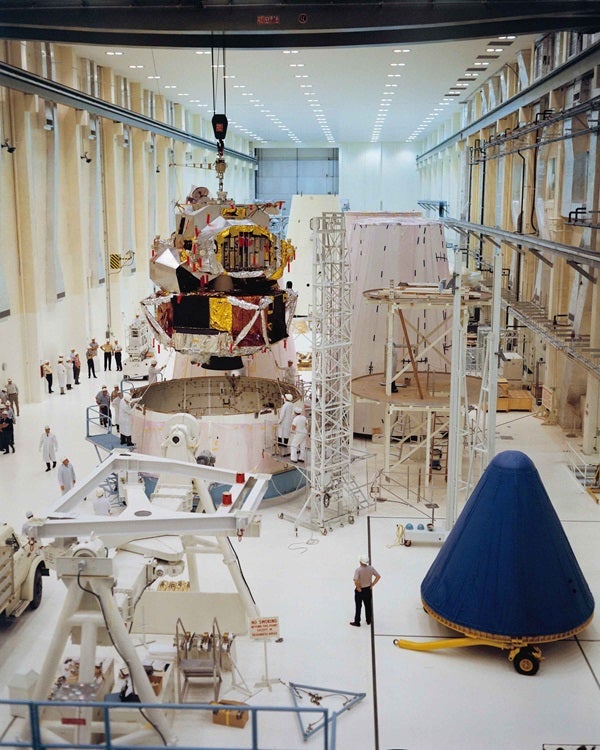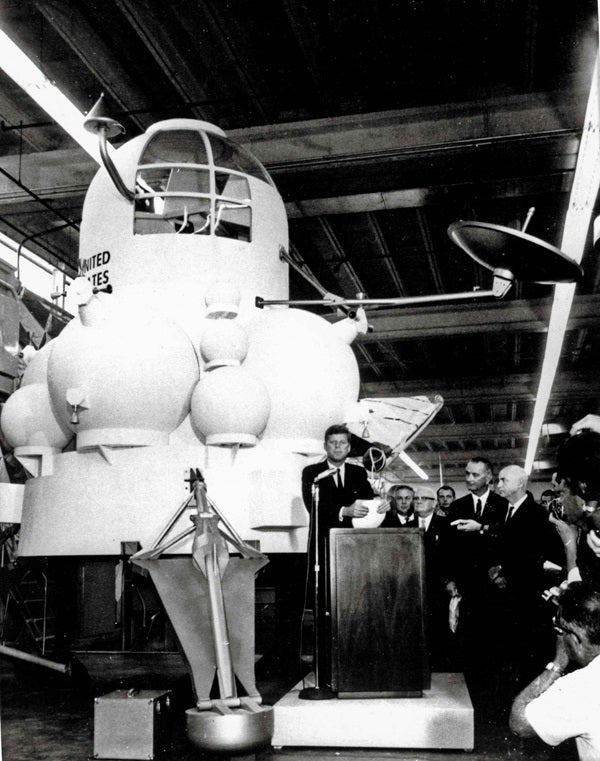What they would descend in was unclear. No one knew how to land on another world, much less how to build something that could land on the Moon, so NASA asked interested contractors to submit bids to build the Lunar Excursion Module.
The Grumman Aircraft Engineering Corporation won the contract November 7, 1962. Work officially began January 14, 1963, just a little under seven years to the end-of-decade lunar landing deadline. Things immediately moved quickly, but while North American Aviation attempted to preserve a year’s worth of work with the Block concept, the Lunar Excursion Module suffered through its own development changes.
Grumman engineers merged necessity and experience. Necessity and NASA’s contract specifications dictated the LM would be a two-stage vehicle, wherein the descent stage would land on fixed gear and then serve as a launchpad for the ascent stage. Experience told Grumman that the simplest vertical landing vehicle was a helicopter, so engineers designed the LM with two seats and four bubblelike windows for ample visibility. But those windows caused a huge problem. Not only were they heavy, but they were weak points that opened the LM to potentially fatal temperature fluctuations.
To solve this problem, engineers at either NASA or Grumman — recollections are divided — realized that there was no rule saying astronauts had to fly sitting down. Standing closer to smaller windows would give the same visibility and in the Moon’s lower gravity field, just one-sixth what we feel on Earth, human legs would be more-than-adequate shock absorbers for the moment of lunar touchdown.
A buglike craft
By the fall of 1964, after only two years of development, the LM had become a spacecraft designed to do the unimaginable: land on the Moon.
On the outside, it almost didn’t look up to the task. Because it would be launched in a protective shroud and would only fly in a vacuum, Grumman engineers designed the LM from the inside out without worrying about aerodynamics.
Inside the LM, the crew would fly standing up, secured in place by hook-and-loop fasteners on the floor, as well as cables that clipped into their suits at waist level. Around them were 12 instrument panels housing 158 switches, 16 variable controls, four hand controllers, two computer keyboards, and a host of displays. Housed within this hardware was the Primary Guidance and Navigation Section (or PGNS, pronounced “pings”), the onboard digital autopilot system. While the computer monitored the craft’s position, environment, and consumables vital to the landing, the crew could keep an eye on displays and the lunar terrain, taking over manual control if needed.
The crew cabin was a snug 92 inches (234 centimeters) in diameter and 42 inches (107 cm) deep, with the LM’s external structure built directly around this hardware. The result was a lumpy ascent stage over an octagonal descent stage, which provided extra storage for surface experiment packages, lunar rovers (on later missions), and a special compartment for the flag.
The astronauts didn’t love the LM at first blush. As hotshot fighter pilots used to streamlined, aerodynamic planes, they thought the buglike spacecraft looked more gangly than flight-worthy. The crew of Apollo 9 even gave their LM the call sign “Spider” when it flew in March 1969.
But they came to love it. Two years ago, I had a chance to talk to David Scott, command module pilot of Apollo 9 and commander of Apollo 15. I asked him which of all the planes he’d ever flown was his favorite, and he answered, “The LM on fumes.” He said it was so light and responsive it was an absolute dream to pilot.
Though each spacecraft played a specific role, the CSM and LM together became the backbone of 11 Apollo missions — even famously so, on Apollo 13. Through triumphs and one successful failure, the Apollo Command/Service and Lunar Modules kept 24 men alive on what was arguably humanity’s most audacious journey.












